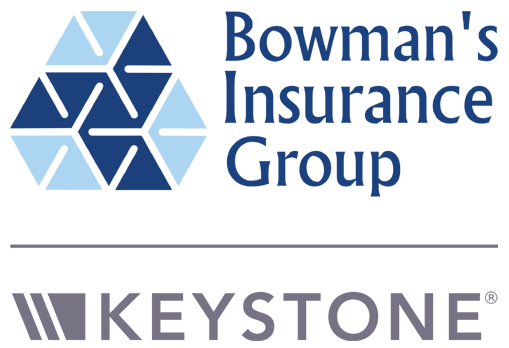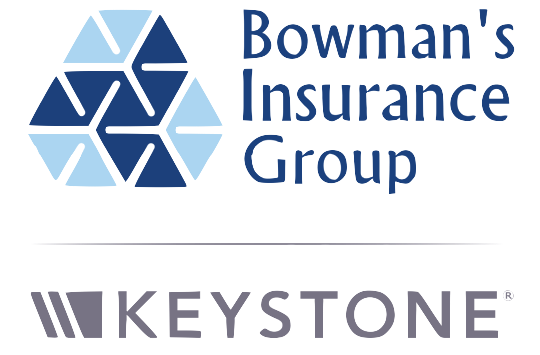
Commercial property insurance is a crucial aspect of risk management for businesses operating in Pennsylvania. As the landscape of business evolves, so too does the cost of insuring these properties. Many business owners have noticed a steady increase in their commercial property insurance rates over the years, leading to questions about the underlying factors driving these changes. In this article, we will explore the reasons behind the rising costs of commercial property insurance in Pennsylvania, the impact of market trends, and what business owners can do to navigate these challenges.
Understanding Commercial Property Insurance
Before delving into the reasons for increasing rates, it's essential to understand what commercial property insurance entails. This type of insurance protects businesses from financial losses due to damage to their physical assets, including buildings, equipment, and inventory. Coverage typically includes protection against risks such as fire, theft, vandalism, and natural disasters. Additionally, many policies offer business interruption coverage, which can help compensate for lost income during periods when a business cannot operate due to covered events. This aspect is crucial for maintaining cash flow and ensuring that a business can recover and resume operations as quickly as possible after a disaster.
The Importance of Coverage
Having adequate commercial property insurance is vital for any business. It not only safeguards physical assets but also provides peace of mind, allowing business owners to focus on growth and operations. In Pennsylvania, where various industries thrive, the need for comprehensive coverage is even more pronounced. For instance, businesses in sectors such as manufacturing, retail, and hospitality face unique risks that can significantly impact their operations. Understanding these risks allows business owners to tailor their insurance policies to fit their specific needs, ensuring they are adequately protected against potential financial setbacks.
How Premiums Are Calculated
Insurance premiums are determined by several factors, including the property's location, the type of business, the value of the assets, and the level of coverage selected. Insurers assess these variables to gauge the risk associated with providing coverage. Higher perceived risks often lead to increased premiums, which is a significant factor in the rising costs faced by many Pennsylvania businesses. Additionally, the claims history of the business can influence premium rates; businesses with a history of frequent claims may face higher costs as insurers view them as higher risk. Furthermore, advancements in technology and changes in regulatory requirements can also impact how premiums are calculated, making it essential for business owners to stay informed about their coverage options and any changes in the insurance landscape.
Factors Contributing to Rising Rates
Several interconnected factors contribute to the annual increases in commercial property insurance rates in Pennsylvania. Understanding these elements can help business owners make informed decisions about their insurance needs.
Natural Disasters and Climate Change
One of the most significant factors affecting insurance rates is the increasing frequency and severity of natural disasters. Pennsylvania, while not as prone to hurricanes or earthquakes as some other states, still faces risks from severe storms, flooding, and winter weather. As climate change continues to impact weather patterns, insurers are adjusting their rates to reflect the heightened risk of property damage.
For instance, heavy rainfall can lead to flooding, which can cause extensive damage to commercial properties. Insurers are responding to these risks by raising premiums to cover potential losses. Business owners must be aware of these environmental changes and consider how they may affect their coverage needs. Moreover, the unpredictability of weather events means that even businesses in traditionally safer areas may find themselves facing unexpected challenges, necessitating a reevaluation of their insurance policies to ensure adequate protection against such risks.
Economic Factors and Inflation
The broader economic landscape also plays a crucial role in shaping insurance rates. Inflation, in particular, has a direct impact on the cost of materials and labor needed for repairs and rebuilding. As the cost of construction rises, insurers must adjust their premiums to ensure they can cover potential claims adequately.
Additionally, economic fluctuations can lead to increased competition among businesses, resulting in more claims being filed. Insurers may raise rates to compensate for the higher likelihood of payouts, further contributing to the annual increases in commercial property insurance costs. Furthermore, as businesses invest in expanding their operations or upgrading their facilities, the value of insured properties may increase, prompting insurers to adjust their coverage limits and premiums accordingly. This dynamic can create a cycle where rising operational costs and property values lead to higher insurance rates, making it essential for business owners to stay informed about market trends and their implications for insurance costs.
Increased Claims and Loss Ratios
The frequency and severity of claims filed by businesses can significantly influence insurance rates. If insurers experience a higher-than-expected number of claims, they may need to raise premiums to maintain profitability. In Pennsylvania, the rise in claims related to property damage has prompted many insurers to reassess their risk models and adjust rates accordingly.
Business owners should be proactive in managing risks to minimize the likelihood of claims. Implementing safety measures, conducting regular maintenance, and investing in risk management strategies can help reduce the frequency of claims and potentially lead to lower insurance premiums. Additionally, engaging in risk assessment practices can help identify vulnerabilities within a business's operations, allowing owners to take corrective actions before incidents occur. By fostering a culture of safety and preparedness, businesses not only protect their assets but may also find themselves in a better position to negotiate their insurance rates with providers, leading to more favorable terms and conditions in their policies.
The Role of the Insurance Market
The insurance market itself is dynamic and influenced by various factors, including competition, regulatory changes, and market conditions. Understanding how these elements interact can provide insight into why commercial property insurance rates are on the rise.
Market Competition
In a competitive insurance market, companies often strive to attract new customers by offering lower rates. However, if insurers face significant losses due to claims, they may need to raise rates across the board to maintain their financial stability. In Pennsylvania, the balance between competition and profitability can lead to fluctuations in insurance rates.
Business owners should regularly shop around for insurance quotes to ensure they are getting the best possible rates. Engaging with multiple insurers can provide a clearer picture of the market and help identify opportunities for cost savings. Additionally, leveraging technology and online comparison tools can streamline this process, allowing businesses to quickly assess their options and make informed decisions. By understanding the nuances of their specific industry and risk profile, business owners can negotiate better terms and potentially lower premiums, making it crucial to stay informed about both market trends and individual insurer performance.
Regulatory Changes
Changes in regulations can also impact insurance rates. State laws governing insurance practices, coverage requirements, and liability can influence how insurers assess risk and set premiums. In Pennsylvania, any shifts in legislation related to commercial property insurance can lead to adjustments in rates.
Staying informed about regulatory changes is essential for business owners. Engaging with industry associations or consulting with insurance professionals can help navigate these complexities and ensure compliance while managing costs. Moreover, understanding the implications of new regulations can empower business owners to advocate for their interests, whether that means lobbying for more favorable terms or adjusting their risk management strategies to align with evolving legal standards. This proactive approach not only aids in cost management but also enhances overall business resilience in the face of an ever-changing regulatory landscape.
Strategies for Managing Rising Insurance Costs
While rising commercial property insurance rates can be challenging, there are several strategies business owners can employ to manage these costs effectively. By taking proactive steps, businesses can mitigate the impact of increasing premiums.
Reviewing Coverage Needs
Regularly reviewing insurance coverage is crucial for ensuring that businesses have the right amount of protection without overpaying. As businesses grow and evolve, their insurance needs may change. Conducting an annual review of coverage can help identify any gaps or areas where adjustments are necessary.
Working with an experienced insurance agent can provide valuable insights into the appropriate levels of coverage and help tailor policies to meet specific business needs. This can lead to cost savings while ensuring adequate protection. Furthermore, businesses should keep track of any changes in operations, such as the addition of new products, services, or locations, as these factors can influence coverage requirements. By staying informed about the market and potential risks, businesses can make educated decisions that align with their evolving needs.
Implementing Risk Management Practices
Investing in risk management practices can significantly reduce the likelihood of claims and, consequently, insurance costs. This may include implementing safety protocols, conducting employee training, and maintaining the property to prevent damage.
Additionally, businesses can consider investing in security systems, fire prevention measures, and disaster preparedness plans. By demonstrating a commitment to risk management, businesses may be able to negotiate lower premiums with insurers. Regularly assessing and updating these practices not only enhances safety but also fosters a culture of responsibility among employees. Engaging staff in safety initiatives can lead to a more proactive approach to risk management, ultimately benefiting both the workforce and the bottom line.
Exploring Deductibles and Policy Options
Adjusting deductibles can also impact insurance premiums. Opting for a higher deductible can lower monthly premiums, but it’s essential to ensure that the business can afford the out-of-pocket costs in the event of a claim. Additionally, exploring different policy options and endorsements can provide tailored coverage that meets specific needs without excessive costs.
It is also wise to compare quotes from multiple insurers, as rates and coverage can vary significantly. Businesses should not only focus on the premium amount but also consider the insurer's reputation, claims process, and customer service. Engaging in discussions with other business owners about their experiences can provide valuable insights into which insurance providers offer the best balance of cost and service. Moreover, leveraging technology to track claims history and analyze risk can empower businesses to make informed decisions that enhance their insurance strategy.
The Future of Commercial Property Insurance in Pennsylvania
As we look to the future, the landscape of commercial property insurance in Pennsylvania is likely to continue evolving. Understanding emerging trends and potential challenges can help business owners prepare for what lies ahead.
Technological Advancements
Technology is playing an increasingly significant role in the insurance industry. Insurers are leveraging data analytics, artificial intelligence, and machine learning to assess risks more accurately and streamline the claims process. These advancements can lead to more tailored insurance solutions and potentially lower rates for businesses that adopt smart technologies.
For instance, businesses that utilize smart building technologies to monitor environmental conditions and security can provide insurers with valuable data that may lead to reduced premiums. Embracing technology can be a game-changer in managing insurance costs. Moreover, the integration of Internet of Things (IoT) devices allows for real-time monitoring of assets, which can significantly reduce the likelihood of catastrophic losses. This proactive approach not only helps in mitigating risks but also fosters a stronger relationship between insurers and policyholders, as both parties work collaboratively to enhance safety and efficiency.
Shifts in Risk Assessment
As the insurance industry adapts to changing risks, the methods used to assess and price insurance will evolve. Insurers may increasingly rely on predictive modeling and data-driven approaches to evaluate risks associated with specific industries and locations.
Business owners should stay informed about these shifts and be prepared to adapt their insurance strategies accordingly. Engaging with insurance professionals who understand the latest trends can provide a competitive advantage in navigating this evolving landscape. Furthermore, as natural disasters and climate-related events become more frequent, insurers may incorporate geographic data and historical loss trends into their risk assessments. This means that businesses in vulnerable areas might face higher premiums unless they can demonstrate effective risk management strategies, such as investing in resilient infrastructure or disaster recovery planning.
Environmental and Social Governance (ESG) Factors
Environmental and social governance (ESG) considerations are becoming more prominent in the insurance industry. Insurers are increasingly evaluating the sustainability practices of businesses when determining rates. Companies that demonstrate a commitment to sustainability and responsible practices may find themselves eligible for lower premiums.
Business owners should consider integrating ESG principles into their operations. Not only can this lead to potential cost savings on insurance, but it can also enhance the overall reputation and appeal of the business to customers and investors. Additionally, as consumers become more environmentally conscious, businesses that prioritize ESG initiatives may attract a more loyal customer base. This shift in consumer behavior can drive companies to adopt greener practices, which not only benefits the environment but also positions them favorably in the eyes of insurers who are keen to support sustainable business models. As the insurance landscape continues to evolve, those who embrace these principles may find themselves at a distinct advantage in both risk management and market positioning.
Conclusion
The increasing rates of commercial property insurance in Pennsylvania can be attributed to a complex interplay of factors, including natural disasters, economic conditions, market dynamics, and evolving risk assessments. While these rising costs can pose challenges for business owners, proactive strategies such as reviewing coverage, implementing risk management practices, and embracing technology can help mitigate the impact.
As the insurance landscape continues to evolve, staying informed about emerging trends and potential changes will be essential for business owners. By taking a proactive approach to insurance management, businesses can navigate the challenges of rising rates and ensure they are adequately protected for the future.
Ultimately, understanding the factors driving commercial property insurance costs in Pennsylvania empowers business owners to make informed decisions that safeguard their investments and contribute to their long-term success.













